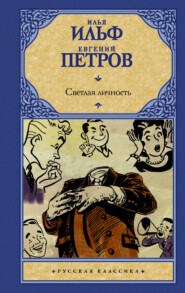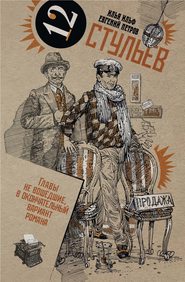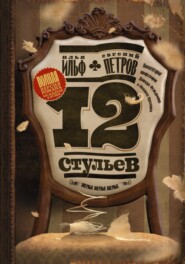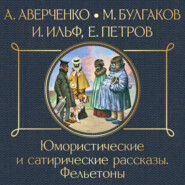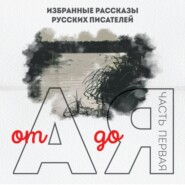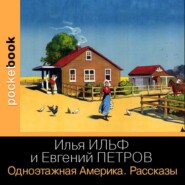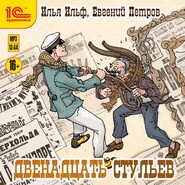По всем вопросам обращайтесь на: info@litportal.ru
(©) 2003-2025.
✖
Одноэтажная Америка / Little Golden America
Автор
Жанр
Серия
Год написания книги
1937
Теги
Настройки чтения
Размер шрифта
Высота строк
Поля
After dinner we become interested in the spiritual fare in which the drug-store traded. Here were wildly decorated picture postcards with views of local sights – very cheap, two for five cents. Black ones cost five cents apiece. The difference in price was right. The black postcards were excellent, while the coloured, ones were a lot of trash. We examined the shelf of books. They were all novels: Sinning is Man’s Game, The Flame of Burnt-Out Love, First Might, Affairs of the Married.
“You must not be shocked, gentlemen,” said Mr.Adams. “You are in a small American town.”
Many people think that America is a land of skyscrapers, that day and night one hears the clatter of elevated and underground railways, the hellish roar of automobiles and the overwhelming desperate cries of stock exchange dealers who rush among the skyscrapers, constantly waving their constantly falling stocks and bonds. This conception is firm, ancient, and customary.
Of course, it’s all there – the skyscrapers, the elevated railways, and the falling stocks. But those are the attributes only of New York and Chicago. And even there the stockbrokers don’t rush around sidewalks, throwing American citizens off their feet, but, entirely unnoticed by the population of America, they abide in their stock exchanges, performing all their machinations inside those monumental buildings.
New York has many skyscrapers; Chicago has a few less; but in the other large cities they are few in number – maybe two or three per city. They tower there in a lonely fashion, in the manner of a waterworks or a firehouse tower. In small towns there are no skyscrapers.
America is preponderantly a country of one-story and two-story houses. The majority of the American population lives in small cities where the population is three, five, ten, fifteen thousand.
What traveller has not experienced that first and unrepeatable feeling of excited expectation that possesses the soul upon entering a city where he has never been before? Every street and every lane open new and newer mysteries to the thirsty eyes of the traveller. Toward evening it begins to seem to him that he has fallen in love with that city. The sight of the street mob, the architecture of the buildings, the smell of the market, and finally the colour peculiar only to that city, compose the traveller’s first and truest impressions. He can live in the city a year, explore its nooks and corners, make friends, then forget the names of all those friends, forget all that he had so conscientiously learned, yet he will never forget his first impressions.
Nothing of the kind can be said about American cities. Of course, even in America there are a few cities that have their inimitable personalities – San Francisco, New York, New Orleans, Santa Fe. One can be enthusiastic about them, one can be amazed by them, love them or detest them – at any rate, they evoke some definite feeling – but almost all other American cities resemble each other like the Canadian quintuplets, whom even their tender mother mistakes for each other. This colourless and depersonalized gathering of brick, asphalt, automobiles, and bill-boards evokes in the traveller only a sense of annoyance and disappointment.
And if the traveller drives into the first small town with a feeling of excited expectation, then in the next town this feeling cools considerably, in the third it is exceeded by astonishment, in the fourth by an ironic smile, in the fifth, seventeenth, eighty-sixth, and hundred and fiftieth it is transformed into indifference – as if the speeding automobile were being met not by the new and unknown cities of an unexplored country, but rather by ordinary railroad sidings with the inevitable bell, hot-water boiler, and the watchman in the red cap.
The city’s principal street passes right through the city. It is called Main Street (which means the principal street) or State Street (the street of the state) or Broadway.
Every small town wants to be like New York. There are New Yorks of two thousand population, there are New Yorks of eighteen hundred. We even found one New York consisting of nine hundred inhabitants, and it was a real city. Its inhabitants walked on their Broadway, their noses high in the air. They weren’t quite sure which Broadway was generally regarded as the more important, theirs or New York’s.
The architecture of the buildings in the principal street cannot present the eye with artistic delights. It consists of brick, the frankest kind of brick, laid in two-story cubes. Here people make money, so there is no room for abstract embellishments.
The lower part of the city (downtown) is called the business centre. Here are the trading establishments, business offices, the motion-picture theatres. There are no people on the sidewalks, but the streets are full of automobiles. They occupy all the free places at the side. They are forbidden to stop only before fire hydrants or driveways, which is indicated by the sign “No Parking”.
It becomes at times a task of torment to find a place where you may leave your machine or, as the Russians in America say, where you can “park” it. One evening we were in San Diego, a city on the shores of the Pacific Ocean. We had to park our machine in order to have our dinner, so we drove a full hour through the city, consumed with the desire to park. The city was so full of machines that there wasn’t room for just one additional machine.
An American small town acquires its character not from its buildings, but from its automobiles and everything that is connected with them— petrol stations, repair stations, Ford stores, or General Motors stores. These attributes apply to all American cities. You may drive a thousand miles, two thousand, three thousand, natural phenomena will change and the climate, the watch will have to be moved ahead, but the little town in which you stop for the night will be exactly the same as the one which you had seen somewhere two weeks before. Like the previous one, it will have no pedestrians, there will be as many if not more automobiles parking at the side-walk, the signs of drug-stores and garages will shine with the same neons or argons, the principal street will be called, as before, Broadway, Main Street, or State Street, the only possible difference being that some of the houses may be built of different materials.
The residential part, or the uptown, is always utterly deserted. The silence there is broken only by the rustle of the hoods of passing automobiles. While the men work in the business centre, the housewives are busy house-cleaning. In the one- or two-storied houses vacuum cleaners hiss, furniture is moved, and the gold frames of photographic portraits are dusted. There is much work, for there are six or seven rooms in each house. It is enough to be in one of them in order to know what furniture will be found in millions of other such houses, to know even how it would be arranged. In the disposition of the rooms, of the placing of the furniture, in all those respects, there is amazing similarity.
The houses and the yards – in which there is the inevitable light garage made of boards, which is never locked – are never separated by fences. A cement strip leads from the door of the house to the sidewalk. A thick layer of fallen leaves lies on the squares of the lawns. The neat little houses shine under the light of the autumn sun.
At times that section of the residential part where well-to-do people live produces an astonishing impression. Here is such an idyllic haven of wealth that it seems as if it were possible only in a fairy-tale. Black nurses in white aprons and caps walk with little gentlemen. Red-haired girls with blue eyes roll light yellow hoops. Splendid sedans stand beside wealthy houses.
But beside this higher world, quite close, is located the severe iron and brick business centre, the ever-frightful American centre of business, where all the houses look like fire stations, where money is made in order to provide for the idyllic haven just described. There is such a cruel difference between these two parts that at first one does not believe they actually are located in the same city. Alas, they are always together! This is precisely why the business centre is so frightful – because all its strength goes to the creation of an idyllic haven for people of wealth. One can come to understand quite a lot after a sojourn in a small town. It does not matter where you see it, whether in the East, the West, or the South. It will be the same.
The machine flies down the road. Little cities flash by. What pretentious names! Syracuse, Pompeii, Batavia,Warsaw, Caledonia, Waterloo, Geneva, Moscow – a lovely little Moscow, where you can get lunch #2 in a drug-store, griddle cakes covered with maple syrup, and where for dinner you are entitled to sweet-salty pickles, where in the motion-picture theatre a film of bandit life is unreeled – a purely American Moscow.
There are several Parises, Londons, there is a Shanghai, a Harbin, and a score of Petersburgs. There is a Moscow in the state of Ohio, and there are eighteen other Moscows, in other states. One of the Petersburgs has a hundred thousand population. There are Odessas. It doesn’t matter that near the Odessas there is not only no Black Sea but not any sea at all. One is located in the state of Texas. Who was the Odessaite who had wandered so far? Did he find his happiness there? No one, of course, will ever know that. There are Naples and Florence. Near Naples, instead of Vesuvius, is the smokestack of a canning factory, while in Florence it is undoubtedly quite useless to venture a conversation about frescoes and similar subjects of little interest and devoid of all possibility of producing a definite income.
But then, in all these cities you can buy the latest model automobile and electric refrigerator (the dream of the newly-weds), there is hot and cold water in all the taps of all the houses, and, if the little town is of slightly better grade, it has a decent hotel, where in your room you will have three kinds of water: hot, cold, and iced.
Each city has several churches – Methodist,Congregational, Baptist. There will inevitably be a many-columned building of the Christian Science Church. But if you are not a Baptist or a Methodist and do not believe in Christian Science, then there is nothing for you to do but to go to a “movie pitcher,” to look at a beautifully photographed;, beautifully sounding motion picture, the contents of which befog your senses with their foolishness.
In every small town are the excellent buildings ofelementary and middle schools. It may even be regarded as a rule that the best building in a small town will inevitably be a school building. But after school the boys go to the motion-picture theatre, where they watch the adventures of gangsters, play gangsters in the streets, and tirelessly wield revolvers and machine-guns manufactured in incredible quantities by toy factories.
Everlasting is the automobile and petrol tedium of small cities.
Many of the rebellious writers of America have come from the small towns of the Middle West. Theirs is a revolt against sameness, against the deadly and futile quest of the dollar.
Some of the towns make heroic efforts to distinguish themselves from their brethren of the same type. Signs are hung at the entrance to the town, quite, let us say, like signs over the entrance to a store, so that the customer may know what is being sold there.
“Redwood City!”
And under it in verse is written: “Climate best bygovernment test!” Here they trade in climate.
The climate may be the best, but the life is the same as in the cities that have no splendid climate.
Main Street. In large show windows stand automobiles wrapped, for the occasion of the approaching New Year, in cellophane and tied with coloured ribbons. Behind somewhat smaller windows learned druggists squeeze the juice out of oranges, or fry eggs with bacon, and through the heart of the city, not on a mound or over a bridge, but right through the main street, a long freight train passes at full-speed. The engine bell swings and rings out sonorously.
Such is the small town, be it Paris or Moscow or Cairo or one of the innumerable American Springfields.
12. A Big Little Town
AN AUTOMOBILE journey across America is like a journey across an ocean, monotonous and magnificent. Whenever you go out on deck, in the morning or in the evening, in a storm or a calm, on Monday or on Thursday, you will always find water, of which there is no end. Whenever you look out the window of an automobile there will always be an excellent smooth road, with petrol stations, tourist houses, and billboards on the sides. You saw all this yesterday and the day before, and you know that you will see the very same thing tomorrow and the day after. And the dinner in the state of Ohio will be the same as yesterday’s when you passed through the state of New York – quite as on a steamer, where the change of latitude and longitude introduces no changes in the menu of your dinner, or in the disposition of the passengers’ day. It is in this consistent sameness that the colossal dimensions and the incalculable wealth of the United States are expressed. Before saying about Eastern America that this is a mountainous or a desert or a forest land, one wants to say the main thing, the most important thing, about it – it is the land of automobiles and electricity.
The journey was scarcely begun when we managed to violate the principal point of our daily itinerary as worked out by Mr. Adams.
“Gentlemen!” he had said before our departure. “Travel on American roads is a serious and dangerous thing.”
“But American roads are the best in the world,” we countered.
“That is precisely why they are the most dangerous. No, no, don’t contradict me! You simply do not want to understand! The better the roads, the greater the speed with which the automobiles travel over them. No, no, no, gentlemen! This is very, very dangerous! We must agree definitely that with the approach of evening we retire for the night, and that’s tire end of it! Finished!”
That is exactly how we agreed to behave.
But now an evening found us on the road, and we not only did not stop as Mr. Adams demanded, but put on the lights and continued to fly across the long state of New York.
We were approaching the world centre of the electrical industry, the town of Schenectady.
It is frightful to race at night over an American highway. Darkness to the right and to the left. But the face is struck by the lightning flashes of automobile headlights coming at you. They fly past, one after the other, like small hurricanes of light, with a curt and irate feline spit. The speed is the same as in the daytime, but it seems to have doubled. In front, on a long incline, stretches the mobile prospect of display lights, which seem to put out of sight the red lights of the automobiles immediately in front of us. Through the rear window of the machine constantly penetrates the impatient light of the vehicles that are catching up with us. It is impossible to stop or to decrease speed. You must race ahead, ever ahead. The measured, blinding spurts of light cause a man to begin yawning. The indifference of sleep possesses him. It is no longer comprehensible whither you are riding or what for, and only somewhere in the nethermost depth of the brain persists the frightful thought: any minute now some gay and drunken idiot with an optimistic grin will cut into our machine, and there will be an accident, a catastrophe.
Mr. Adams was restless in his seat beside his wife, who with true American self-assurance entered into the mad tempo of this nocturnal race.
“Why, Becky, Becky!” he muttered in desperation. “What are you doing? It’s impossible!”
He turned to us. His spectacles flared with alarm.
“Gentlemen!” he pronounced in the voice of a prophet. “You do not understand the meaning of an automobile catastrophe in America!”
Finally he managed to persuade Mrs. Adams to decrease her speed considerably and to deny herself the pleasure of outracing trucks. He accustomed us to the monastic routine of genuine automobile travellers, whose aim is to study the country and not to lay down their bones in a neatly dug trench beside the road.
Only a good deal later, toward the end of the journey, did we begin to appreciate the value of his advice. During its one and a half year’s participation in the World War America lost fifty thousand killed, while during the past year and a half fifty-six thousand of America’s peaceful inhabitants perished as a consequence of automobile catastrophes. And there is no power in America that can prevent this mass murder.
We were still about twenty miles from Schenectady, but the city was already demonstrating its electrical might. Street lamps appeared on the highway. Elongated, like melons, they gave off a strong, yet at the same time not a blinding, yellow light. One could see it gathering in those lamps – that which was not a light but an amazing luminous thing.
The city came upon us unnoticeably. That is a peculiarity of American cities when you approach them by automobile. The road is the same, only there are presently more bill-boards and petrol stations.
“You must not be shocked, gentlemen,” said Mr.Adams. “You are in a small American town.”
Many people think that America is a land of skyscrapers, that day and night one hears the clatter of elevated and underground railways, the hellish roar of automobiles and the overwhelming desperate cries of stock exchange dealers who rush among the skyscrapers, constantly waving their constantly falling stocks and bonds. This conception is firm, ancient, and customary.
Of course, it’s all there – the skyscrapers, the elevated railways, and the falling stocks. But those are the attributes only of New York and Chicago. And even there the stockbrokers don’t rush around sidewalks, throwing American citizens off their feet, but, entirely unnoticed by the population of America, they abide in their stock exchanges, performing all their machinations inside those monumental buildings.
New York has many skyscrapers; Chicago has a few less; but in the other large cities they are few in number – maybe two or three per city. They tower there in a lonely fashion, in the manner of a waterworks or a firehouse tower. In small towns there are no skyscrapers.
America is preponderantly a country of one-story and two-story houses. The majority of the American population lives in small cities where the population is three, five, ten, fifteen thousand.
What traveller has not experienced that first and unrepeatable feeling of excited expectation that possesses the soul upon entering a city where he has never been before? Every street and every lane open new and newer mysteries to the thirsty eyes of the traveller. Toward evening it begins to seem to him that he has fallen in love with that city. The sight of the street mob, the architecture of the buildings, the smell of the market, and finally the colour peculiar only to that city, compose the traveller’s first and truest impressions. He can live in the city a year, explore its nooks and corners, make friends, then forget the names of all those friends, forget all that he had so conscientiously learned, yet he will never forget his first impressions.
Nothing of the kind can be said about American cities. Of course, even in America there are a few cities that have their inimitable personalities – San Francisco, New York, New Orleans, Santa Fe. One can be enthusiastic about them, one can be amazed by them, love them or detest them – at any rate, they evoke some definite feeling – but almost all other American cities resemble each other like the Canadian quintuplets, whom even their tender mother mistakes for each other. This colourless and depersonalized gathering of brick, asphalt, automobiles, and bill-boards evokes in the traveller only a sense of annoyance and disappointment.
And if the traveller drives into the first small town with a feeling of excited expectation, then in the next town this feeling cools considerably, in the third it is exceeded by astonishment, in the fourth by an ironic smile, in the fifth, seventeenth, eighty-sixth, and hundred and fiftieth it is transformed into indifference – as if the speeding automobile were being met not by the new and unknown cities of an unexplored country, but rather by ordinary railroad sidings with the inevitable bell, hot-water boiler, and the watchman in the red cap.
The city’s principal street passes right through the city. It is called Main Street (which means the principal street) or State Street (the street of the state) or Broadway.
Every small town wants to be like New York. There are New Yorks of two thousand population, there are New Yorks of eighteen hundred. We even found one New York consisting of nine hundred inhabitants, and it was a real city. Its inhabitants walked on their Broadway, their noses high in the air. They weren’t quite sure which Broadway was generally regarded as the more important, theirs or New York’s.
The architecture of the buildings in the principal street cannot present the eye with artistic delights. It consists of brick, the frankest kind of brick, laid in two-story cubes. Here people make money, so there is no room for abstract embellishments.
The lower part of the city (downtown) is called the business centre. Here are the trading establishments, business offices, the motion-picture theatres. There are no people on the sidewalks, but the streets are full of automobiles. They occupy all the free places at the side. They are forbidden to stop only before fire hydrants or driveways, which is indicated by the sign “No Parking”.
It becomes at times a task of torment to find a place where you may leave your machine or, as the Russians in America say, where you can “park” it. One evening we were in San Diego, a city on the shores of the Pacific Ocean. We had to park our machine in order to have our dinner, so we drove a full hour through the city, consumed with the desire to park. The city was so full of machines that there wasn’t room for just one additional machine.
An American small town acquires its character not from its buildings, but from its automobiles and everything that is connected with them— petrol stations, repair stations, Ford stores, or General Motors stores. These attributes apply to all American cities. You may drive a thousand miles, two thousand, three thousand, natural phenomena will change and the climate, the watch will have to be moved ahead, but the little town in which you stop for the night will be exactly the same as the one which you had seen somewhere two weeks before. Like the previous one, it will have no pedestrians, there will be as many if not more automobiles parking at the side-walk, the signs of drug-stores and garages will shine with the same neons or argons, the principal street will be called, as before, Broadway, Main Street, or State Street, the only possible difference being that some of the houses may be built of different materials.
The residential part, or the uptown, is always utterly deserted. The silence there is broken only by the rustle of the hoods of passing automobiles. While the men work in the business centre, the housewives are busy house-cleaning. In the one- or two-storied houses vacuum cleaners hiss, furniture is moved, and the gold frames of photographic portraits are dusted. There is much work, for there are six or seven rooms in each house. It is enough to be in one of them in order to know what furniture will be found in millions of other such houses, to know even how it would be arranged. In the disposition of the rooms, of the placing of the furniture, in all those respects, there is amazing similarity.
The houses and the yards – in which there is the inevitable light garage made of boards, which is never locked – are never separated by fences. A cement strip leads from the door of the house to the sidewalk. A thick layer of fallen leaves lies on the squares of the lawns. The neat little houses shine under the light of the autumn sun.
At times that section of the residential part where well-to-do people live produces an astonishing impression. Here is such an idyllic haven of wealth that it seems as if it were possible only in a fairy-tale. Black nurses in white aprons and caps walk with little gentlemen. Red-haired girls with blue eyes roll light yellow hoops. Splendid sedans stand beside wealthy houses.
But beside this higher world, quite close, is located the severe iron and brick business centre, the ever-frightful American centre of business, where all the houses look like fire stations, where money is made in order to provide for the idyllic haven just described. There is such a cruel difference between these two parts that at first one does not believe they actually are located in the same city. Alas, they are always together! This is precisely why the business centre is so frightful – because all its strength goes to the creation of an idyllic haven for people of wealth. One can come to understand quite a lot after a sojourn in a small town. It does not matter where you see it, whether in the East, the West, or the South. It will be the same.
The machine flies down the road. Little cities flash by. What pretentious names! Syracuse, Pompeii, Batavia,Warsaw, Caledonia, Waterloo, Geneva, Moscow – a lovely little Moscow, where you can get lunch #2 in a drug-store, griddle cakes covered with maple syrup, and where for dinner you are entitled to sweet-salty pickles, where in the motion-picture theatre a film of bandit life is unreeled – a purely American Moscow.
There are several Parises, Londons, there is a Shanghai, a Harbin, and a score of Petersburgs. There is a Moscow in the state of Ohio, and there are eighteen other Moscows, in other states. One of the Petersburgs has a hundred thousand population. There are Odessas. It doesn’t matter that near the Odessas there is not only no Black Sea but not any sea at all. One is located in the state of Texas. Who was the Odessaite who had wandered so far? Did he find his happiness there? No one, of course, will ever know that. There are Naples and Florence. Near Naples, instead of Vesuvius, is the smokestack of a canning factory, while in Florence it is undoubtedly quite useless to venture a conversation about frescoes and similar subjects of little interest and devoid of all possibility of producing a definite income.
But then, in all these cities you can buy the latest model automobile and electric refrigerator (the dream of the newly-weds), there is hot and cold water in all the taps of all the houses, and, if the little town is of slightly better grade, it has a decent hotel, where in your room you will have three kinds of water: hot, cold, and iced.
Each city has several churches – Methodist,Congregational, Baptist. There will inevitably be a many-columned building of the Christian Science Church. But if you are not a Baptist or a Methodist and do not believe in Christian Science, then there is nothing for you to do but to go to a “movie pitcher,” to look at a beautifully photographed;, beautifully sounding motion picture, the contents of which befog your senses with their foolishness.
In every small town are the excellent buildings ofelementary and middle schools. It may even be regarded as a rule that the best building in a small town will inevitably be a school building. But after school the boys go to the motion-picture theatre, where they watch the adventures of gangsters, play gangsters in the streets, and tirelessly wield revolvers and machine-guns manufactured in incredible quantities by toy factories.
Everlasting is the automobile and petrol tedium of small cities.
Many of the rebellious writers of America have come from the small towns of the Middle West. Theirs is a revolt against sameness, against the deadly and futile quest of the dollar.
Some of the towns make heroic efforts to distinguish themselves from their brethren of the same type. Signs are hung at the entrance to the town, quite, let us say, like signs over the entrance to a store, so that the customer may know what is being sold there.
“Redwood City!”
And under it in verse is written: “Climate best bygovernment test!” Here they trade in climate.
The climate may be the best, but the life is the same as in the cities that have no splendid climate.
Main Street. In large show windows stand automobiles wrapped, for the occasion of the approaching New Year, in cellophane and tied with coloured ribbons. Behind somewhat smaller windows learned druggists squeeze the juice out of oranges, or fry eggs with bacon, and through the heart of the city, not on a mound or over a bridge, but right through the main street, a long freight train passes at full-speed. The engine bell swings and rings out sonorously.
Such is the small town, be it Paris or Moscow or Cairo or one of the innumerable American Springfields.
12. A Big Little Town
AN AUTOMOBILE journey across America is like a journey across an ocean, monotonous and magnificent. Whenever you go out on deck, in the morning or in the evening, in a storm or a calm, on Monday or on Thursday, you will always find water, of which there is no end. Whenever you look out the window of an automobile there will always be an excellent smooth road, with petrol stations, tourist houses, and billboards on the sides. You saw all this yesterday and the day before, and you know that you will see the very same thing tomorrow and the day after. And the dinner in the state of Ohio will be the same as yesterday’s when you passed through the state of New York – quite as on a steamer, where the change of latitude and longitude introduces no changes in the menu of your dinner, or in the disposition of the passengers’ day. It is in this consistent sameness that the colossal dimensions and the incalculable wealth of the United States are expressed. Before saying about Eastern America that this is a mountainous or a desert or a forest land, one wants to say the main thing, the most important thing, about it – it is the land of automobiles and electricity.
The journey was scarcely begun when we managed to violate the principal point of our daily itinerary as worked out by Mr. Adams.
“Gentlemen!” he had said before our departure. “Travel on American roads is a serious and dangerous thing.”
“But American roads are the best in the world,” we countered.
“That is precisely why they are the most dangerous. No, no, don’t contradict me! You simply do not want to understand! The better the roads, the greater the speed with which the automobiles travel over them. No, no, no, gentlemen! This is very, very dangerous! We must agree definitely that with the approach of evening we retire for the night, and that’s tire end of it! Finished!”
That is exactly how we agreed to behave.
But now an evening found us on the road, and we not only did not stop as Mr. Adams demanded, but put on the lights and continued to fly across the long state of New York.
We were approaching the world centre of the electrical industry, the town of Schenectady.
It is frightful to race at night over an American highway. Darkness to the right and to the left. But the face is struck by the lightning flashes of automobile headlights coming at you. They fly past, one after the other, like small hurricanes of light, with a curt and irate feline spit. The speed is the same as in the daytime, but it seems to have doubled. In front, on a long incline, stretches the mobile prospect of display lights, which seem to put out of sight the red lights of the automobiles immediately in front of us. Through the rear window of the machine constantly penetrates the impatient light of the vehicles that are catching up with us. It is impossible to stop or to decrease speed. You must race ahead, ever ahead. The measured, blinding spurts of light cause a man to begin yawning. The indifference of sleep possesses him. It is no longer comprehensible whither you are riding or what for, and only somewhere in the nethermost depth of the brain persists the frightful thought: any minute now some gay and drunken idiot with an optimistic grin will cut into our machine, and there will be an accident, a catastrophe.
Mr. Adams was restless in his seat beside his wife, who with true American self-assurance entered into the mad tempo of this nocturnal race.
“Why, Becky, Becky!” he muttered in desperation. “What are you doing? It’s impossible!”
He turned to us. His spectacles flared with alarm.
“Gentlemen!” he pronounced in the voice of a prophet. “You do not understand the meaning of an automobile catastrophe in America!”
Finally he managed to persuade Mrs. Adams to decrease her speed considerably and to deny herself the pleasure of outracing trucks. He accustomed us to the monastic routine of genuine automobile travellers, whose aim is to study the country and not to lay down their bones in a neatly dug trench beside the road.
Only a good deal later, toward the end of the journey, did we begin to appreciate the value of his advice. During its one and a half year’s participation in the World War America lost fifty thousand killed, while during the past year and a half fifty-six thousand of America’s peaceful inhabitants perished as a consequence of automobile catastrophes. And there is no power in America that can prevent this mass murder.
We were still about twenty miles from Schenectady, but the city was already demonstrating its electrical might. Street lamps appeared on the highway. Elongated, like melons, they gave off a strong, yet at the same time not a blinding, yellow light. One could see it gathering in those lamps – that which was not a light but an amazing luminous thing.
The city came upon us unnoticeably. That is a peculiarity of American cities when you approach them by automobile. The road is the same, only there are presently more bill-boards and petrol stations.






